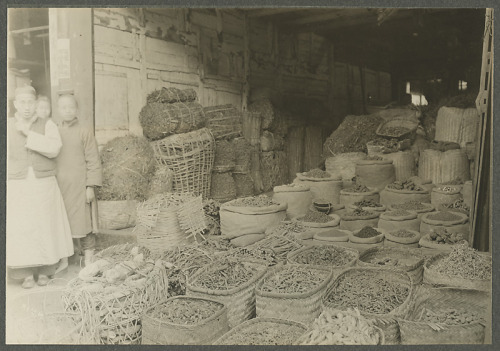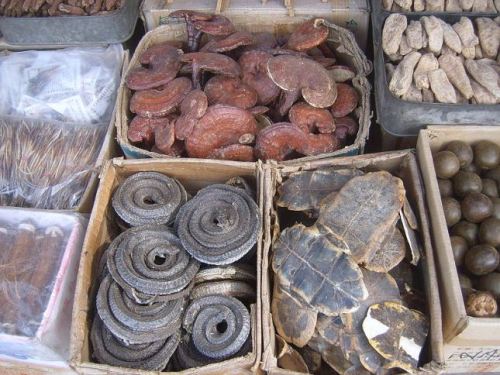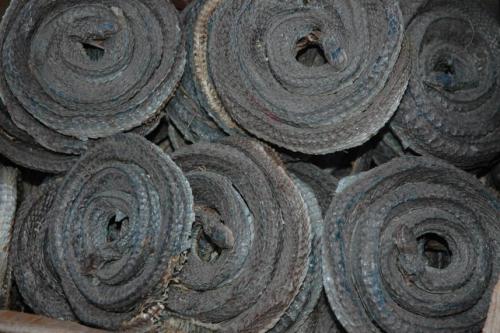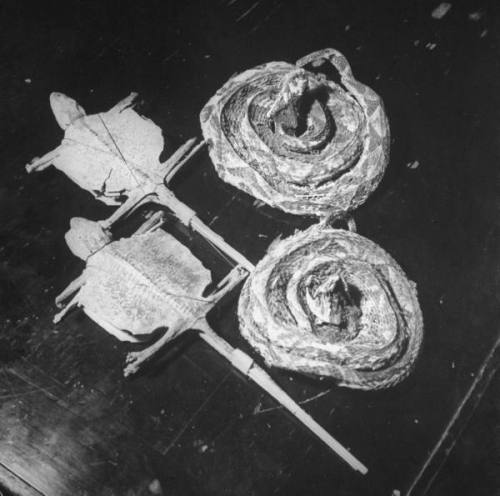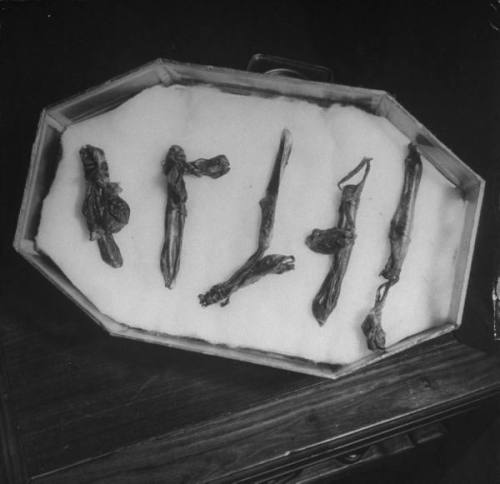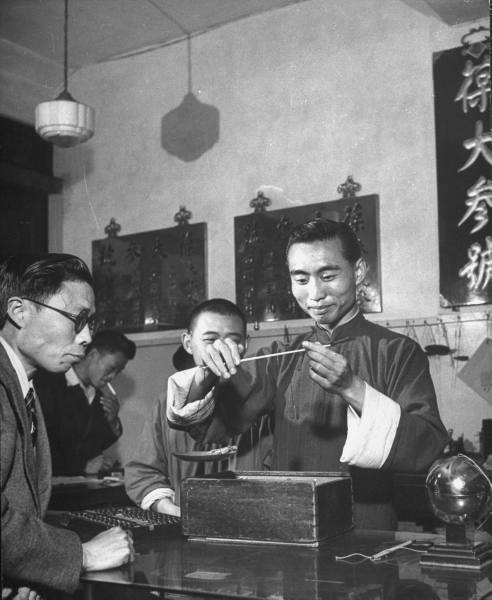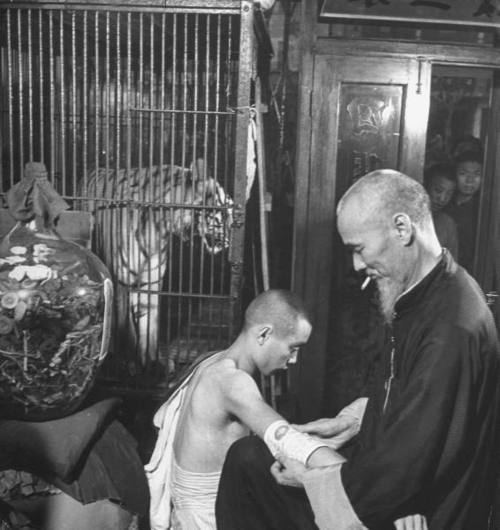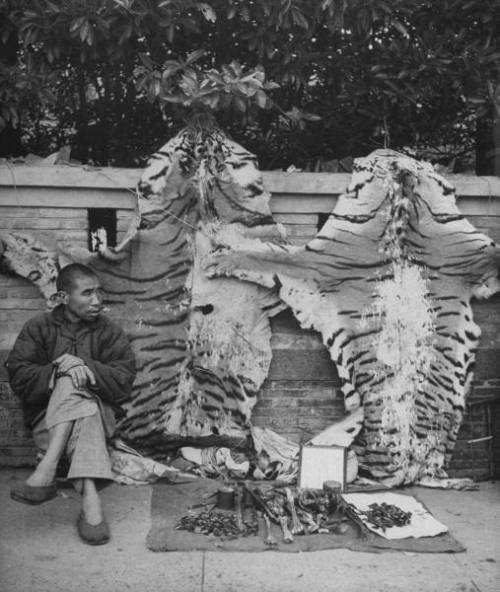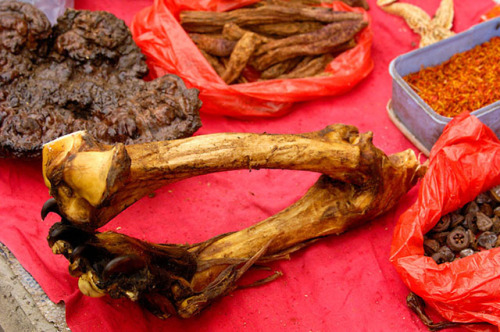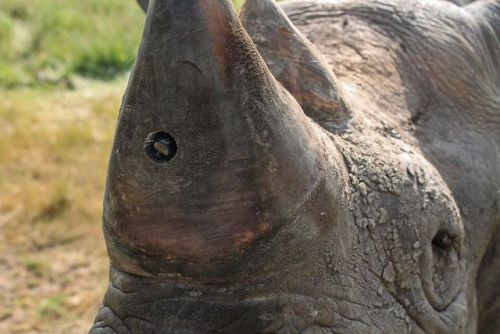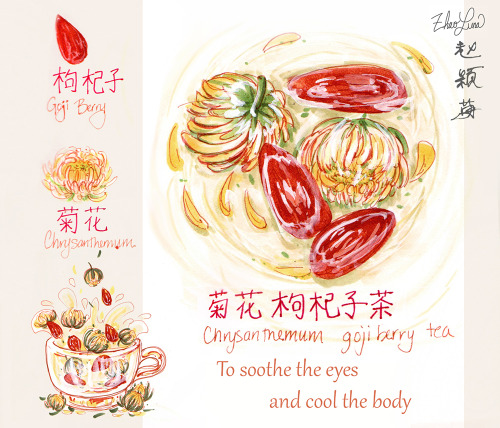#traditional chinese medicine
Dried snakes and turtle plastrons seen at a market for traditional medicine in Xi’an, 2011
Sometimes it seems like just about anything can be used in Chinese medicine. Dried snakes and turtle plastrons are sold alongside mushrooms, ginseng, and buddha fruits. Other, stranger, ingredients are also used, such as rhinoceros horn, powdered scorpions, or fossilized bones. To a western mind it can seem more like ancient alchemy than medicine and many of the core doctrines are seen as false or foolhardy by science.
Post link
George Silk: Shanghai Pharmacies, 1946
1. Dry lizard and rattle snake powder used for medical cures
2. Shopping in Shanghais largest pharmacy
3. Dried umbilical cords, supposedly good for general health and fertility
4. Kai Kou-Shao sitting in his pharmacy with some of the stuffed animals he keeps around and also a live duck, all of which have some sort of curative significance
5. Seals kidneys used for medical purposes
6. A clerk at the Pao Dah pharmacy weighing a seal kidney for a customer
7. Horns of a very young stag and a stag foetus, used for Chinese cures; the horns of the stag are made into medication containing hormones and the foetus is symbol of fertility
Post link
George Silk: Tiger Bones series, Shanghai, 1946
1. Dr. Chen Chu, a tiger bone doctor, standing in his pharmacy
2. Dr. Chen Chu feeding a caged tiger a strip of meat
3. Dr. Chen Chu bandaging an arm after applying some tiger bone balm
Post link
George Silk: Street vendor with tiger bones for those who wish to make their own medicine, Shanghai, 1946
Post link
Tigers in Traditional Chinese Medicine
For more than 1000 years the use of tiger parts has been included in the traditional Chinese medicine regimen. Because of the tiger’s strength and mythical power, the Chinese culture believes that the tiger has medicinal qualities, which helps treat chronic ailments, cure disease and replenish the body’s essential energy.
Traditionally, most tiger parts were considered to have a healing effect on human beings.
Whiskers for tooth ache
Teeth for rabies, asthma, and sores on penis
Eyeballs for epilepsy and malaria
Biles for convulsions in children
Brain to cure laziness and pimples
Blood for strengthening the constitution and will power
Skin to treat mental illness
Fat for vomiting, dog bites, bleeding, and haemmorrhoids
Tail for various skin diseases
Claws for insomnia
Bone for rheumatism, arthritis, general weakness, headaches, stiffness or paralysis primarily in lower back and legs, and dysentery
Despite scientific proof that tend to discount all claims of any curative power in tiger bones, Chinese medicine stores in Hong Kong, China, Taiwan, South Korea, Vietnam and in Chinatowns across Europe and North America, do a steady trade in tiger wines, powder, tiger balms and tiger pills. Many Asian communities believe that tiger bone, in powdered form or prepared as tiger wine, soothes rheumatic pain and cures ulcers, malaria and burns.
Although the use of tiger bones was removed from the traditional Chinese medicine (TCM) pharmacopeia in 1993, when China first introduced a domestic ban on tiger trade, the increase in the standard of living in southeast Asia has made these remedies available to most people.
It is no wonder then that this newly affluent population has had a great effect on wildlife numbers and the demand for tiger parts. In many places in China, tiger parts are a delicacy that is served at special private banquets. The use of endangered tiger products and their medicines is seen as a symbol of high status and wealth. Some remedies list tiger parts as an ingredient, but the real animal parts are so expensive that often the medicines may have only trace elements; but even this is enough to promote the continued slaughter of the tiger.
Further reading:
On Tiger Balm (which contains no tiger parts) here, on recent sales of tiger bone wine on auction, an 15 years old undercover discovery of sales of tiger parts in American Chinatowns and finally a general introduction to the issue.
Post link
Platycodon Grandiflorum

- In Traditional Chinese Medicine: Jie Geng
- Parts used: roots and immature flowers
- Meridian affected: lungs, liver, blood
- Properties: bitter, astringent, detoxifying, anti-inflammatory, anti-histamine, expectorant
Medicinal Actions
Clears the lungs and sinuses of mucus, dilates the bronchi, expels pus and phlegm
Soothes sore throat
Boosts immune system function and white cell count
Expedites healing of soft tissues
Nearly endless in its beautiful varieties, the orchid flower almost seems to float on air as it invites one to contemplate its beauty. There are over 30,000 different varieties of wild orchids growing across this Earth, from the jungles of the equator to the arctic tundra and everywhere in-between! That’s not even counting over 200,000 hybridized varieties that florists have bred into existence. Orchids come in so many different varieties which love so many different growing conditions that, no matter where your garden, you’re sure to find a variety that’s right for you!

Energy ~ Feminine
Planet ~ Venus
Element ~ Water
Deities ~ Aphrodite, Qu Yan
Most varieties of orchids grow in jungle conditions, clinging to tree bark with thick white roots that are adept at drawing out moisture and nutrients. Because these varieties like to grow high in the tree tops, they’re ravenous for intense sunlight and thrive on 12-hour days — close to midsummer conditions in temperate regions. Many varieties of orchids are difficult to grow, to be sure; even professional growers can struggle to bring them to bloom! But even if your thumb isn’t quite green enough to get these fussy flowers to take to your garden, there are dozens of natural varieties and hundreds of hybridized species who are perfectly content to grow on a windowsill or under lights.
If you want to give your orchid the best possible chance of growing, do thorough research into which varieties are the best fit for your region, and purchase the most mature plant you can: younger plants are very difficult to please. If possible, buy it while it’s in bloom — that way you’ll immediately know what you’re striving for! While there are simply too many varieties of orchid to give general growing instructions for all of them, a look at the plant’s physical characteristics should give some clues. Plants with few or leathery leaves will likely prefer high-light environments, while plants with soft, limp leaves are probably light-sensitive and should not be placed in sunny south-facing windows.
In addition to one variety of orchid being our source for vanilla, the tuberous root of the plant is filled with a highly-nutritious and starchy substance, which is famous for a sweetish taste and somewhat unpleasant smell. This substance, known as bassorin, can be used to replace starch as a reserve material, or to make a drink known as salep — named after an Arabic word for orchid — which was sold in stalls from the Middle East to the streets of London until being supplanted by coffee. In addition to this drink’s purported rejuvenating properties (being lauded as a strengthening and demulcent or anti-inflammatory agent), Chinese medicine has recorded uses for orchids dating back over 3,000 years, noting varieties of the Dendrobium genus of orchids as one of nine ‘faery herbs’ said to be a gift from heaven. Different types of orchids are used in remedies for a huge variety of purposes, ranging from improving memory to treating rheumatism to even easing the symptoms of tuberculosis! Many cultures, including Greece and China, use the plant as an aphrodisiac, and orchid fragrance is also used in perfume and aromatherapy.
In terms of magick, old texts tell of witches using orchid tubers in their philters, the fresh tuber being given to promote true love whilst the withered one checks wrongful passions. Culpepper refers to orchids as being under “the dominion of Venus,” and tells us that, among other things, when “being bruised and applied to the place” they cure the King’s Evil. Orchids also correspond to beauty and elegance, expressing uniqueness, ecstasy, spiritual intuition, and Goddess energy. Some varieties of orchids are also used in creating visions, entering trance-states, and inducing psychic powers.
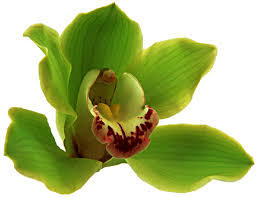
Confucius wrote many poems on the orchid’s beauty, and even based some of his teachings on this delicate flower! He wrote, “The orchids grow in the woods and they let out their fragrance even if there is no one around to appreciate it. Likewise, men of noble character will not let poverty deter their will to be guided by high principles and morals.” Whether you ascribe to the teachings of Confucius or not, the many multitudes of orchid varieties have a great deal to give us on all levels of our life: whether contemplating them philosophically, utilizing their medicinal properties, or simply savoring their beauty, orchids are a treasure to be cherished.
Different colors of orchid have different meanings, but generally speaking, in flower language it means “Love, Beauty, and Refinement.”
May the Tree of Life always shelter you!
The biggest threat to the black rhinoceros is poaching for its horn. Historically, the horn was used by Middle Eastern nations to make handles and hilts for ornate ceremonial daggers called jambiyas. Demand for these daggers was so great that rhino populations plummeted 96% between 1970 and 1992. Now, most rhinos are poached for use in traditional Chinese medicine. Rhino horn for use in medicine has even been discovered for sale in the United States.
Various techniques for protecting rhinos have been attempted, from armed guards to planting cameras and trackers in their horns (second image).
Post link
On top of work stress, the hate and violence against Asians/Asian Americans has called for a greater need for me to take better care of myself. Since I was a kid, when I find myself feeling isolated or looked down upon because of my racial identity, I find comfort, recovery, empowerment in reconnecting with my Chinese roots.
Recently turned to exploring traditional Chinese medicine (specifically herbs) for improving my health. It’s taken me THIS long to realize how much wisdom I’ve been ignoring, despite it being used all the time by my family. I’ve started making this chrysanthemum goji berry tea a few times a week to help my strained eyes and to “cool” my body. I feel noticeably less yeet hay/body feels less inflamed even immediately after drinking the tea.
I know processing pain is part of the healing process. The second half is building up your strength to keep going. Let your identity fill you up with comfort, and let it protect you when external forces try to strip away your power.
Post link

1 free-range happy-when-alive chicken
1 tsp apple cider vinegar
Salt to taste
Chinese Herbs:
2-3 Black fungus (blood)
Lotus Nut (Lotus seed, Lian Zi) (Blood)
Dang Shen (Condonopsis) (Chi)
Logan Berries (blood)
Astragalus (Huang Qi) (Chi)
American Ginseng (blood and chi)
Solomons Seal (Polygonatum, Huang Jing, Yu Shu) (Blood chi)
Chinese Yam (Chi)
Dried Lily Bulb (Bai He)
I Onion, Diced
Place the onion in the bottom of you clay pot or ceramic slow cooker. Remember not to use metal pots as some herbs interact with metal, such as stainless steel and iron pots.
Place your washed chicken on top of the onion.
Place your herbs into the pots (around three pieces of each of the larger herbs and 6 of the smaller herbs). Cover chicken with COLD water. Do not use boiling water. Add the apple cider vinegar.
Slow cook for several hours 6-24 hours. Top up with boiling water if required. Cold water will cause the muscle to contract causing the chicken to become though.
Remove the chicken from the pot carefully and remove the meat from the bones. Discard bones.
Remove any tough and fibrous herbs that haven’t softened.
Using a hand blender whiz the remaining herbs and add the chicken meat and sweet corn if using.
Season to taste and serve hot!
Source: http://www.healthykitchen.co.nz/


